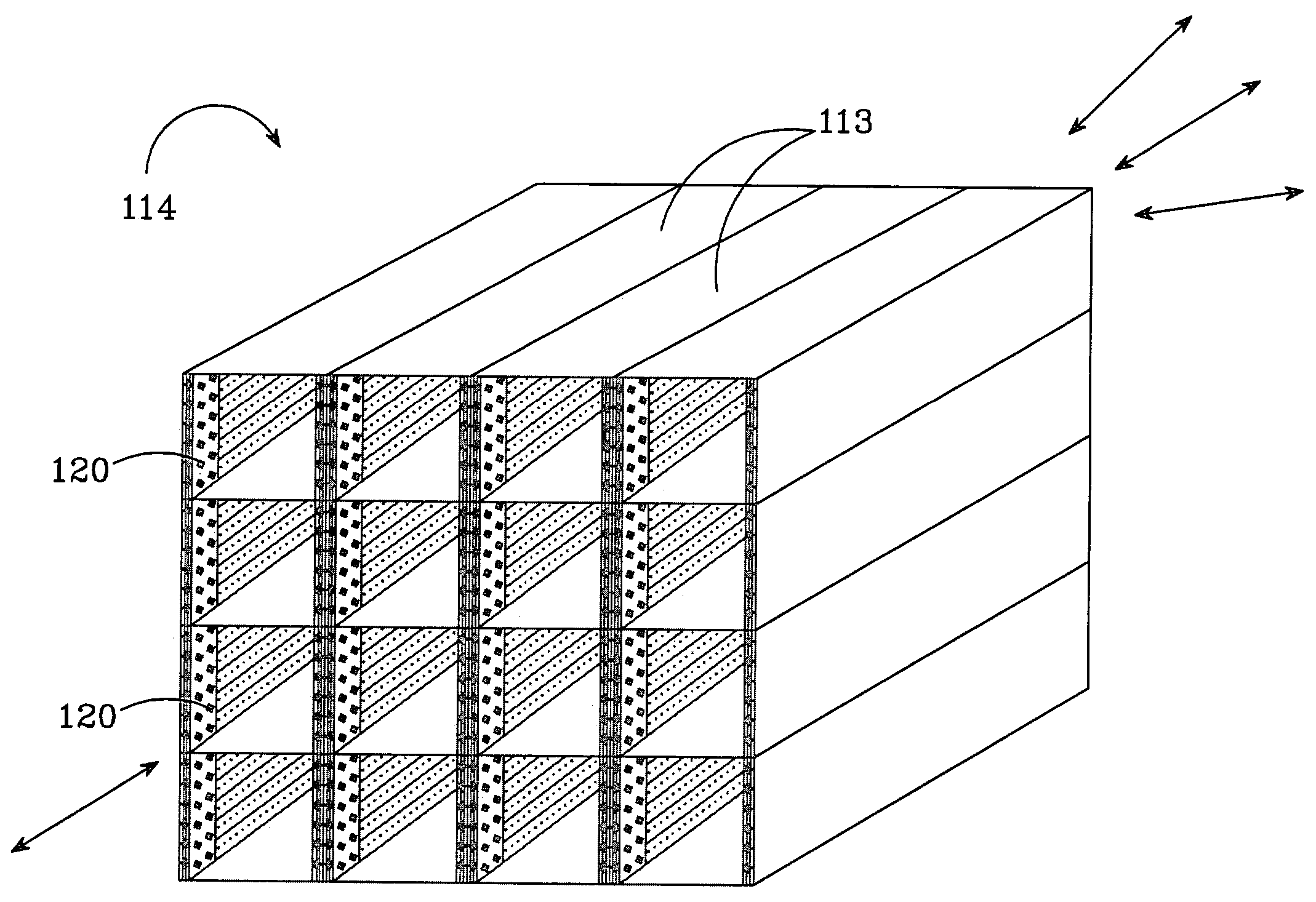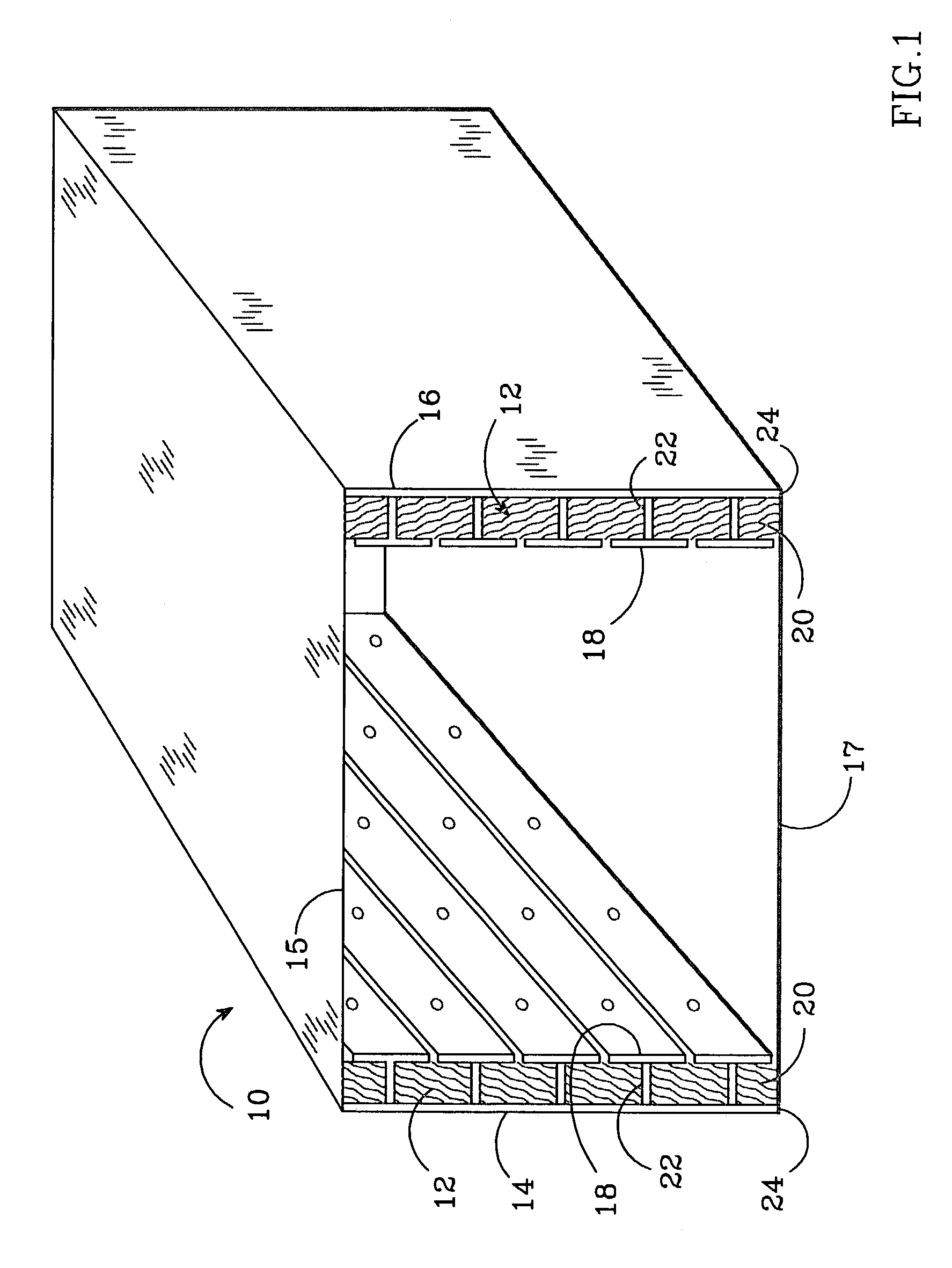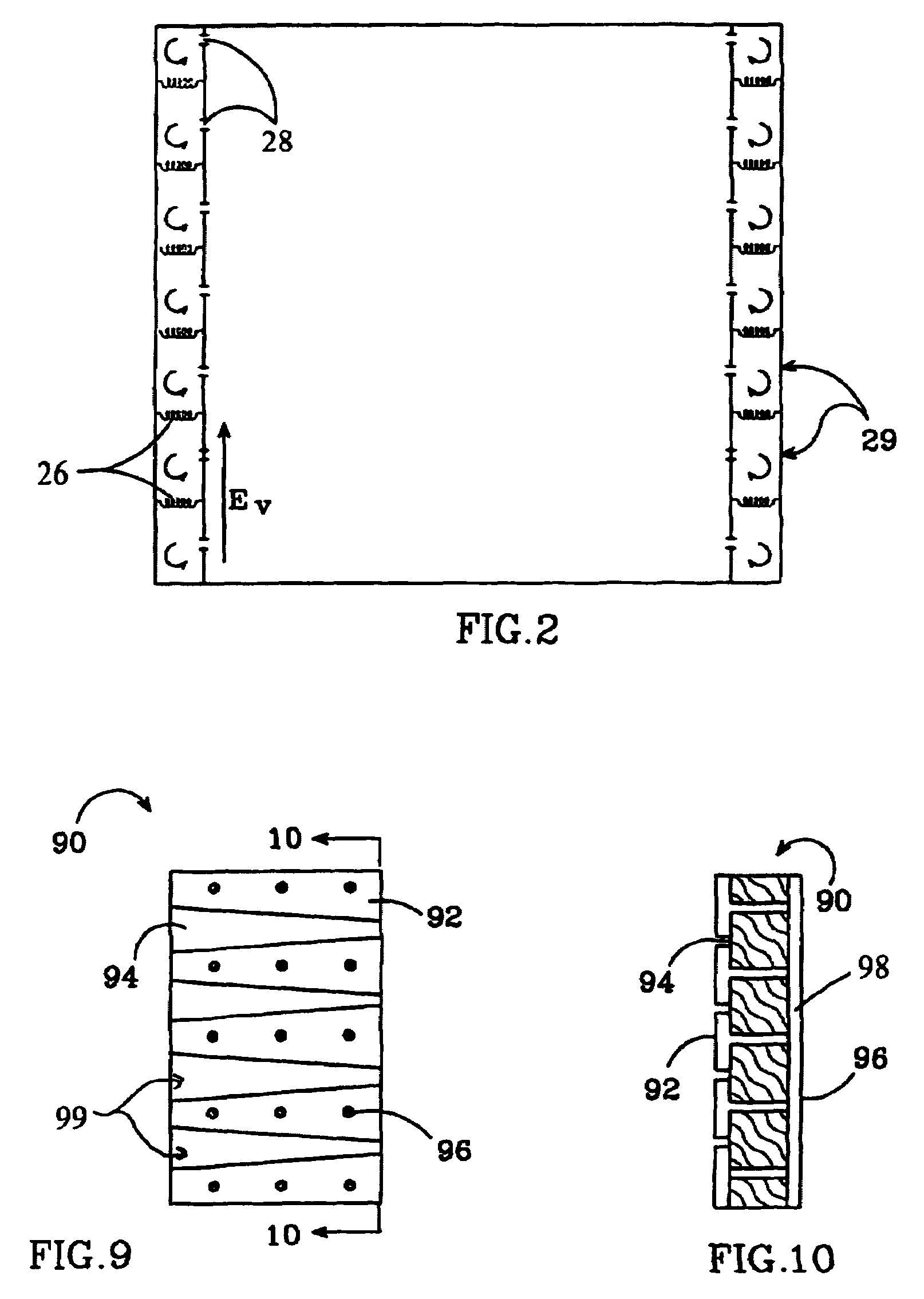Phase shifting waveguide and module utilizing the waveguides for beam phase shifting and steering
a phase shifting waveguide and waveguide technology, applied in the direction of delay lines, electrical equipment, antennas, etc., can solve the problems of inability to accurately assemble, require precision machining, and become too small and expensiv
- Summary
- Abstract
- Description
- Claims
- Application Information
AI Technical Summary
Benefits of technology
Problems solved by technology
Method used
Image
Examples
Embodiment Construction
Waveguide Phase Shifter
[0035]FIG. 1 shows a new phase shifting waveguide 10 constructed in accordance with the present invention, which comprises a top wall 15, bottom wall 17, and left and right sidewalls 14, 16. It further comprises strip impedance structures 12 on its left and right sidewalls 14, 16. Each impedance structure includes a plurality of conductive strips 18 parallel to the waveguide's longitudinal axis and facing its interior. The strips 18 are made of a conductive material and are provided on a substrate of dielectric material 20. Conductive sheets 24 are provided over the exterior of each dielectric substrate 20 with vias 22 included along each strip's longitudinal axis extending through the substrate to its respective sheet 24 to form a conductive path between the strips and the sheets.
[0036]With the impedance structures 12 on its sidewalls, the waveguide 10 is particularly applicable to passing vertically polarized signals that have an E field transverse to the st...
PUM
 Login to View More
Login to View More Abstract
Description
Claims
Application Information
 Login to View More
Login to View More - R&D
- Intellectual Property
- Life Sciences
- Materials
- Tech Scout
- Unparalleled Data Quality
- Higher Quality Content
- 60% Fewer Hallucinations
Browse by: Latest US Patents, China's latest patents, Technical Efficacy Thesaurus, Application Domain, Technology Topic, Popular Technical Reports.
© 2025 PatSnap. All rights reserved.Legal|Privacy policy|Modern Slavery Act Transparency Statement|Sitemap|About US| Contact US: help@patsnap.com



